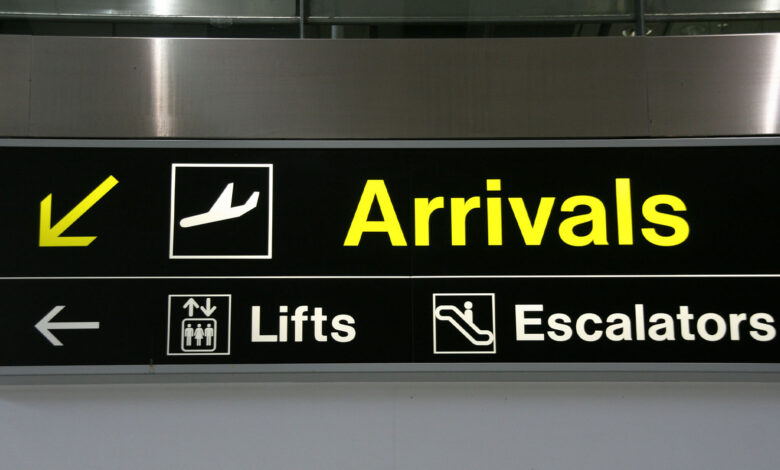What the EU asylum pact means for Ireland

In July 2024, the State officially opted into the European Union’s common asylum and migration policy. eolas Magazine examines what this means for immigration rules in Ireland and the scale of immigration and asylum numbers.
Under the new rules, the European Union seeks to establish a “fair share” principle on the allocation of asylum seekers and refugees in the European Union, owing to stated claims by the Department of Justice that “some member states receive a disproportionate number of claimants in their territory”.
Under the “fair share” principle, the “solidarity” would be set at EU level, with member states contributing on the basis of a mandatory “fair share” principle which is based on a formula of 50 per cent population and 50 per cent GDP. Member states can then choose their preferred method of solidarity which could take the form of relocations or financial contributions.
Mandatory accelerated asylum processing for applicants who meet certain criteria, including instances in which they come from a third country with a low recognition rate for asylum across the Union or those who present without documentation will be introduced. This will mean that those who are not entitled to asylum will be, according to the Department of Justice, processed “swiftly”.
The Department of Justice states: “Accelerated asylum processing was introduced in Ireland when Minister McEntee signed regulations in November 2022 to commence the fast processing of applicants from designated safe countries of origin.”
The efficacy of these measures is disputed, with the main opposition party, Sinn Féin stating that although there were 5,717 asylum applications refused, withdrawn or determined inadmissible in 2023, only 948 of people subject to these refusals were issued with deportation orders and 317 people are “confirmed to have left”.
Under the pact, the State is to be bound by the following legal obligations:
- Reception Conditions Directive;
- Qualification Regulation;
- Asylum Procedure Regulation;
- Resettlement Regulation;
- Asylum and Migration Management Regulation;
- Eurodac Regulation; and
- Crisis and Force Majeure Regulation.
The Government is now required to transpose these new rules into practice under the Common Implementation Plan, adopted by the Commission on 12 June 2024. The implementation plan sets out actions required to translate the new migration rules into practice and must be adopted by December 2024.
Does Ireland have high asylum applicants?
The population of the European Union is an estimated 449 million, while the population of the State is estimated at just under 5.3 million.
According to Eurostat, in 2022, the EU granted protection status to 384,000 asylum seekers, up by 39 per cent compared with 2021 (275,000). Meanwhile, 875,000 people applied for international protection in the EU countries for the first time. This is an increase of 63 per cent compared with 2021.
The EU countries that received the highest number of first-time applications in 2022 were Germany (218,000 or 25 per cent of all first-time asylum applications in the EU), France (138,000 or 16 per cent), followed by Spain (116,000 or 13 per cent), Austria (110,000 or 13 per cent), and Italy (77,000 or 9 per cent). These five countries together accounted for 75 per cent of all first-time asylum applications in the EU.
Compared with the population of each EU country, the highest rate of first-time applicants in 2022 was recorded in Cyprus (24,000 applicants per one million people), ahead of Austria (12,000) and Luxembourg (4,000). By contrast, the lowest rate was observed in Slovakia (90 per one million people) and Hungary (five per one million people).
Eurostat records 13,645 first-time asylum applicants in Ireland in 2022, up from 2,615 in 2021, marking a yearly increase of 589 per cent.
As a proportion of population, Ireland’s asylum application rate in 2022 was roughly 388 per one million people, based on CSO population estimates compared with the applicant numbers presented by Eurostat. This places Ireland well below some EU member states, and significantly below the UK, which, according to UK Home Office numbers, had 87,000 asylum seekers in 2023, meaning it has a presentation rate of roughly 1,298 per one million people.
In April 2024, Minister for Justice Helen McEntee TD reportedly told the Cabinet that 90 per cent of the State’s asylum seekers arrived via Northern Ireland, although there are no reliable statistics available.
In spite of this assessment, the Department did not comment on whether the claim that 90 per cent of the State’s asylum seekers arrived via Northern Ireland was verifiable. In a statement to eolas Magazine, the Department of Justice asserted: “The Department’s assessment, based on the experience of staff and others working in the field, and based on material gathered at interviews, is that in a significant proportion of cases those applying in the IPO [International protection Office] have entered over the land border.”
McEntee had previously claimed that the number of asylum seeks arriving via the North was 80 per cent, but this was disputed by Minister for Foreign Affairs Micheál Martin TD, who stated that McEntee’s numbers were based on presentations of refugees, but that the 80 per cent figure was “not statistical”.
Ireland’s asylum application numbers are at a record high, at least four-times higher than those presented during the Syrian refugee crisis of 2015, but they are not disproportionately high compared to those of other EU member states and are significantly lower than those of the UK.
Since Ireland is not a member of the EU Schengen Agreement, there is no automatic obligation for the State to participate in a common asylum policy, as it has an opt-in or opt-out clause on individual proposals in the areas of freedom, security and justice through the Lisbon Treaty.
Furthermore, the migration pact does not make any dispensation for Ireland’s special relationship with the UK, which includes freedom of movement between Ireland and the UK via the Common Travel Area, as well as an open border between the two jurisdictions in Ireland.
Therefore if, as Minister McEntee claims, there is a challenge in dealing with refugees arriving via Britain, it seems unlikely that signing up the EU’s centralised approach to dealing with asylum seekers will solve the challenge that is purportedly taking place.





